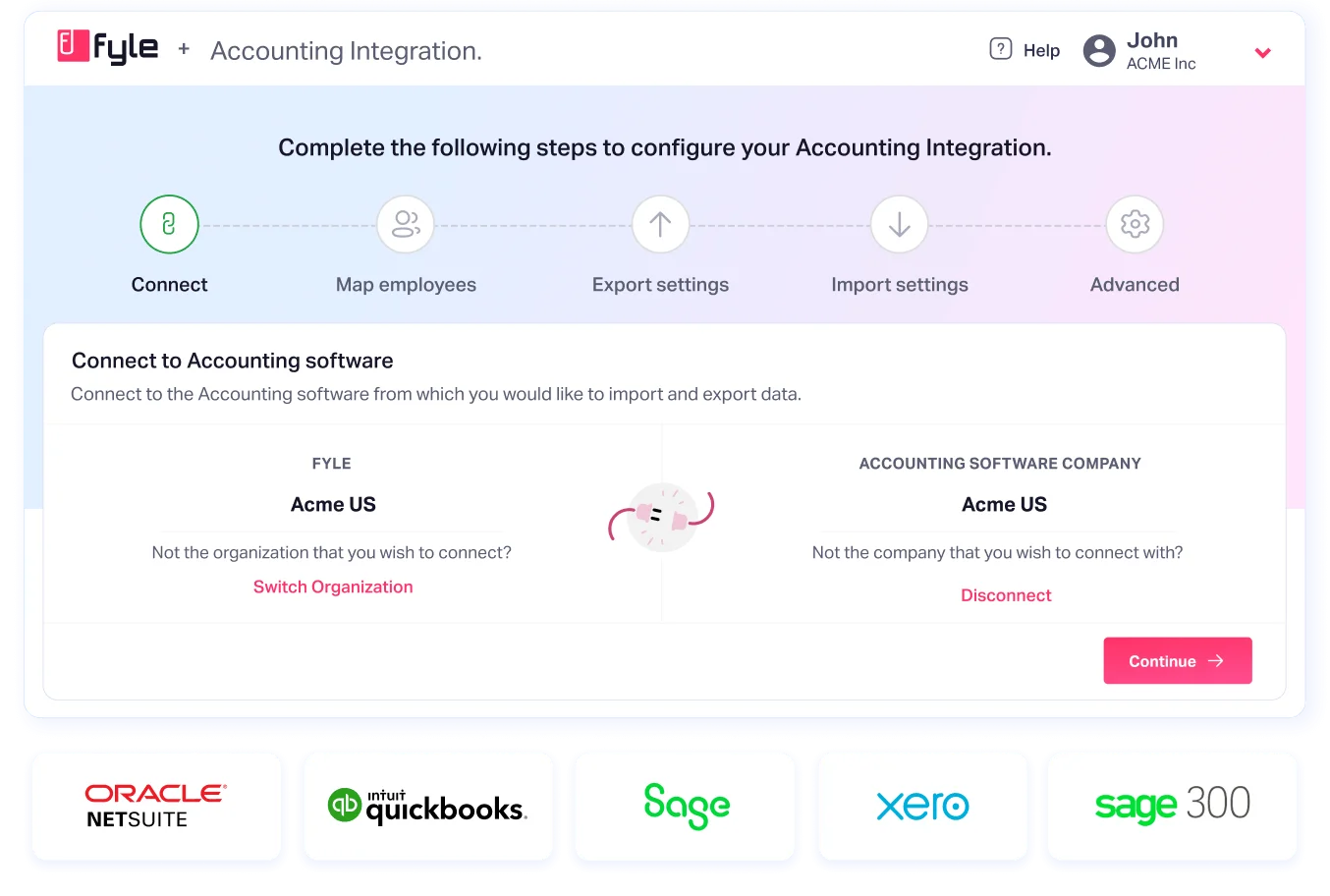Accounting errors are a silent drain on any business, but for Small and Medium-sized Businesses (SMBs), they can be particularly devastating. These aren't just minor miscalculations; they're common pitfalls that can lead to a cascade of costly consequences, from frustrating financial penalties and inaccurate reporting to poor decision-making and heightened audit risks.
The good news? Most accounting errors are preventable and can be corrected. This guide will serve as your essential resource, helping you to identify these sneaky mistakes, understand their root causes, and proactively implement solutions to safeguard your financial health.
What are Accounting Errors?

Why Accounting Errors Impact SMBs (and Your Bottom Line)
Accurate financial records are the backbone of a healthy business. When accounting errors creep in, they can have tangible and damaging effects:
- Financial Penalties and Fines: Incorrect tax filings due to errors can lead to penalties from tax authorities.
- Inaccurate Financial Statements: Skewed balance sheets and income statements can create a misleading picture of your business's performance.
- Poor Business Decision-Making: Decisions based on faulty data can result in missed opportunities or costly missteps in budgeting, investment, or strategy.
- Increased Audit Risks: Discrepancies and errors often flag your business for closer scrutiny by auditors, leading to time-consuming and stressful reviews.
- Wasted Time and Resources: Correcting errors is a laborious process that diverts valuable time and effort from productive activities.
Causes of Accounting Errors
Understanding the why behind errors is the first step to prevention. Common culprits include:
- Human Error: Simple typos, misplaced decimal points, or forgetfulness are incredibly common, especially during manual data entry.
- Lack of Training or Knowledge: Inexperience with fundamental accounting principles or unfamiliarity with specific software features can lead to mistakes.
- Outdated Systems and Manual Processes: Relying on spreadsheets or paper-based systems increases complexity and the likelihood of errors compared to automated solutions.
- High Transaction Volume: As your business grows, the sheer volume of transactions can overwhelm manual processes, thereby increasing the likelihood of errors.
- Lack of Internal Controls: Insufficient checks and balances, like a single person handling all recording and reconciliation, can create opportunities for errors to go unnoticed.
- Complex Transactions: Misunderstanding how to properly account for intricate financial activities (e.g., specific types of leases, complex inventory adjustments) can lead to errors of principle.
The 10 Common Accounting Errors (and How to Fix Them)

Error 1: Data Entry Errors (Clerical Mistakes)
Explanation: These are arguably the most common errors, stemming from simple human mistakes during manual data entry. They include typos, misplaced decimals (e.g., entering $1,000 as $10.00), or hitting the wrong key. Such errors can affect any part of your financial record and, if compounded, lead to significant imbalances.
How to Fix: Implement strict data verification procedures and encourage double-checking. Utilize automated data capture technologies like Optical Character Recognition (OCR) or real-time bank feeds to minimize manual input. Regularly review entries for common mistakes.
Error 2: Errors of Omission (Missing Transactions)
Explanation: This occurs when a transaction is completely forgotten or overlooked and consequently not recorded in your accounting system. It might be a forgotten invoice, an unrecorded payment received, or a missed expense entry. This leads to an incomplete financial picture and an imbalanced trial balance.
How to Fix: Establish a systematic process for recording all transactions as soon as they occur. Enforce regular and timely bank and credit card reconciliations. Crucially, use automated systems that capture transactions as they happen, making omissions far less likely.
Error 3: Duplicate Entries
Explanation: A common error where the same income or expense transaction is recorded two or more times. This inflates revenues or expenses, distorts financial reports, and can lead to overpayments or an inaccurate perception of cash flow.
How to Fix: Implement accounting software with automated duplicate detection systems. Establish multi-level approval workflows for all expenditures to ensure that transactions are reviewed and approved before final posting. Regularly cross-reference invoices with payments rigorously.
Error 4: Misclassification Errors (Incorrect Categorization)
Explanation: Assigning a transaction to the wrong account or category. This includes classifying a personal expense as a business expense, incorrectly categorizing a capital expenditure as an operating expense, or posting to an incorrect general ledger (GL) account. These mistakes significantly distort financial statements and tax filings.
How to Fix: Maintain a clear, well-defined, and regularly reviewed chart of accounts. Provide comprehensive training to all staff involved in expense categorization. Utilize automated expense management software with smart categorization features and custom fields that guide proper classification.
Error 5: Reconciliation Errors (Unreconciled Accounts)
Explanation: This refers to the failure to regularly compare and match your internal financial records (e.g., cash ledger, credit card statements) with external statements (bank statements, vendor invoices). When accounts are not reconciled, discrepancies, errors, or even fraudulent activities can go unnoticed for extended periods, making them more difficult to rectify.
How to Fix: Implement strict schedules for daily or weekly bank and credit card reconciliations. Automate data feeds from financial institutions for instant matching. Foster a culture where all discrepancies, regardless of their size, are promptly investigated.

Also Read
Error 6: Transposition Errors
Explanation: A specific type of data entry mistake where two digits within an amount are accidentally reversed (e.g., entering $560 instead of $650). These errors are particularly tricky to spot manually because the resulting discrepancy is often divisible by nine, making them blend into other figures.
How to Fix: Encourage diligent double-checking of all manual entries. Employ accounting software with automated data validation and capture features that minimize manual input, thus reducing the opportunity for transpositions. Regular reconciliations can also flag these subtle discrepancies.
Error 7: Errors of Principle (Misapplication of Accounting Rules)
Explanation: These occur when a fundamental accounting principle, such as Generally Accepted Accounting Principles (GAAP) or International Financial Reporting Standards (IFRS), is applied incorrectly.
For instance, incorrectly expensing the purchase of a building (a capital asset) instead of capitalizing and depreciating it over its useful life. These errors don't always cause the trial balance to be out of balance, but can make financial statements fundamentally misleading.
How to Fix: Ensure your accounting and finance staff receive continuous education on current accounting standards. Consult with qualified accountants or financial advisors for complex transactions. Invest in software that incorporates accounting principles and offers guidance on the proper treatment of financial transactions.

Error 8: Reversal Errors (Swapped Debits and Credits)
Explanation: A specific and impactful type of error where a transaction is posted with the correct accounts and amounts, but the debit is entered as a credit, and the credit is entered as a debit. This directly causes the trial balance to be out of balance, requiring careful tracing of individual entries to correct the error.
How to Fix: Thorough training in double-entry bookkeeping principles is essential. Implement regular reviews of journal entries and the trial balance to ensure accuracy. Accounting software often has built-in controls and alerts that flag unusual debit/credit pairings or imbalances, helping to prevent these errors.
Also Read:
Error 9: Errors of Commission (Incorrect Entries)
Explanation: This occurs when a transaction is recorded, but some part of it is incorrect. This includes recording the correct amount but to the wrong customer or vendor subsidiary account, or using an incorrect general ledger account number.
How to Fix: Maintain a clear and detailed chart of accounts; implement automated categorization tools; ensure proper training for all data entry personnel.
Error 10: Rounding Errors
Explanation: Seemingly minor mistakes from incorrectly rounding figures, especially in complex calculations or across multiple entries. These small inaccuracies can accumulate and lead to significant discrepancies over time.
How to Fix: Standardize rounding policies; utilize accounting software that handles calculations precisely; perform regular reconciliations to catch small imbalances early.

Proactive Measures to Prevent Accounting Errors
Beyond simply correcting mistakes, building a resilient accounting system involves implementing strategies to prevent errors before they occur.
- Implement Strong Internal Controls: Establish checks and balances within your financial processes, such as segregating duties for recording transactions from those for approving payments.
- Provide Regular Training: Ensure all staff involved in financial processes, from employees submitting expenses to finance managers, are well-trained on accounting policies, software usage, and best practices.
- Conduct Independent Reviews and Audits: Periodically have an independent party (e.g., an external auditor or a senior accountant not involved in daily entries) review your books for accuracy and compliance.
- Maintain a Clear Chart of Accounts: Develop and regularly update a logical and detailed chart of accounts that accurately reflects your business operations and adheres to accounting principles.
- Document All Processes: Create clear, written procedures and flowcharts for all accounting tasks. This ensures consistency and provides a reference for new hires or complex scenarios.
- Automate Wherever Possible: Transition from manual tasks to automated systems for data entry, categorization, expense reporting, and reconciliation. Automation significantly reduces human error.

The Role of Expense Management Software
In the modern business landscape, specialized expense management software has become an indispensable tool in combating accounting errors. These platforms go beyond simple record-keeping; they fundamentally automate repetitive tasks, drastically reduce manual intervention, and enhance the overall accuracy and efficiency of financial record-keeping, resulting in significantly fewer errors across the board.
How Sage Expense Management (formely Fyle) Helps You Avoid Common Accounting Errors
Sage Expense Management isn't just an expense management tool; it's a powerful ally in transforming your financial operations and actively helping you avoid the common accounting errors discussed.
Eliminating Data Entry Errors with Real-Time Feeds

Real-time credit card feeds automatically capture transaction data the instant a corporate card is swiped. This instantly pre-populates fields such as amount, vendor, and date, drastically reducing the likelihood of manual data entry mistakes.
Preventing Duplicate Entries Automatically
Sage Expense Management's intelligent duplicate detection and implicit merge module automatically flags identical submitted expenses. This proactive notification to users prevents redundant entries from ever being added to your books, effectively addressing any duplication errors.
Ensuring Correct Categorization and Compliance

Setup custom fields (e.g., project codes, departments, specific GL accounts) directly on the expense form. Its compliance engine checks expenses against your pre-set policies before submission, helping to prevent misclassification and policy violations.
Streamlining Reconciliation for Accuracy

Sage Expense Management's real-time feeds are paired with automated receipt matching. This powerful combination reconciles transaction data with receipt data in seconds, significantly reducing the time and manual effort required for account reconciliation and enabling the instant detection of discrepancies.
Providing Real-Time Visibility to Catch Issues Early

Sage Expense Management's CoPilot offers a comprehensive, real-time view of all expenses as they occur. This immediate visibility allows you to spot potential issues, miscategorizations, or overspending trends as they happen, enabling proactive corrections before they become larger errors (addressing the overall impact of all errors on decision-making).
Conclusion
In today's fast-paced business environment, diligent accounting practices are not optional; they are fundamental to sustained success. Proactive measures, combined with the strategic implementation of modern expense management software like Sage Expense Management, are essential for maintaining accurate financial records, optimizing resources, and ensuring compliance.
By automating tedious tasks and building robust controls, businesses can minimize costly errors, free up valuable time, and ultimately empower SMBs to focus on growth and innovation with confidence.





.jpg)
















